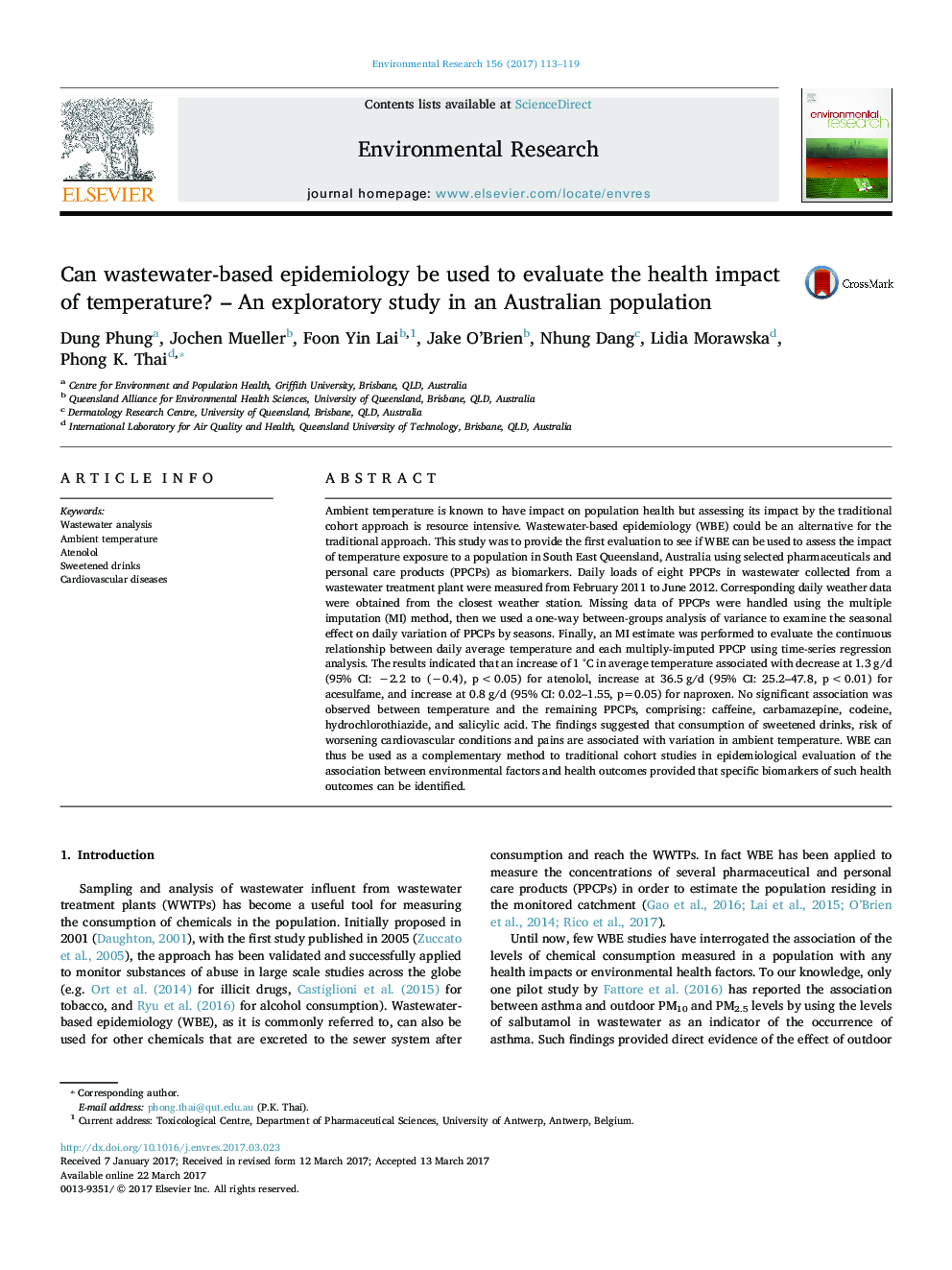| کد مقاله | کد نشریه | سال انتشار | مقاله انگلیسی | نسخه تمام متن |
|---|---|---|---|---|
| 5756495 | 1622547 | 2017 | 7 صفحه PDF | دانلود رایگان |
- First evaluation on health risk of ambient temperature using WBE.
- Temperatures changes associated with sweetened drinks, cardiovascular conditions and pains.
- It is possible to use WBE for examining health risks of ambient temperature.
- More specific biomarkers could improve the applicability of WBE.
Ambient temperature is known to have impact on population health but assessing its impact by the traditional cohort approach is resource intensive. Wastewater-based epidemiology (WBE) could be an alternative for the traditional approach. This study was to provide the first evaluation to see if WBE can be used to assess the impact of temperature exposure to a population in South East Queensland, Australia using selected pharmaceuticals and personal care products (PPCPs) as biomarkers. Daily loads of eight PPCPs in wastewater collected from a wastewater treatment plant were measured from February 2011 to June 2012. Corresponding daily weather data were obtained from the closest weather station. Missing data of PPCPs were handled using the multiple imputation (MI) method, then we used a one-way between-groups analysis of variance to examine the seasonal effect on daily variation of PPCPs by seasons. Finally, an MI estimate was performed to evaluate the continuous relationship between daily average temperature and each multiply-imputed PPCP using time-series regression analysis. The results indicated that an increase of 1 °C in average temperature associated with decrease at 1.3 g/d (95% CI: â2.2 to (â0.4), p<0.05) for atenolol, increase at 36.5 g/d (95% CI: 25.2-47.8, p<0.01) for acesulfame, and increase at 0.8 g/d (95% CI: 0.02-1.55, p=0.05) for naproxen. No significant association was observed between temperature and the remaining PPCPs, comprising: caffeine, carbamazepine, codeine, hydrochlorothiazide, and salicylic acid. The findings suggested that consumption of sweetened drinks, risk of worsening cardiovascular conditions and pains are associated with variation in ambient temperature. WBE can thus be used as a complementary method to traditional cohort studies in epidemiological evaluation of the association between environmental factors and health outcomes provided that specific biomarkers of such health outcomes can be identified.
Journal: Environmental Research - Volume 156, July 2017, Pages 113-119
